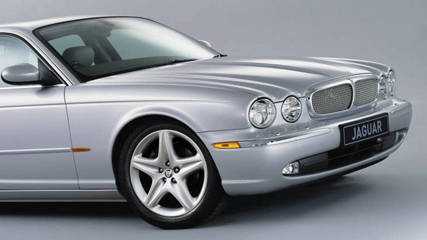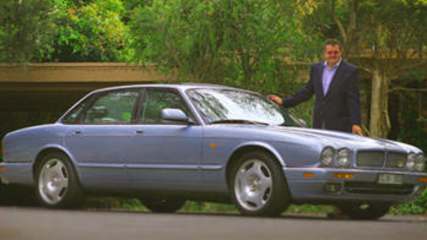Used Jaguar XJ6 and XJ8 review: 1994-2003
By Graham Smith · 28 Jan 2009
Most carmakers today have a performance model that packs the punch of a sports car, but back in the 1950s sedans that performed were rare. Back then sports cars were stripped bare open top two-seaters and sedans were more sedate affairs aimed at families.That was until Jaguar broke the mould and produced its Mark 1 sedan, arguably the first sports sedan ever. That was followed by the even more sporting Mark 2, which is today a much treasured classic icon.If Jaguar boasted the only performance sedan in the late-1950s it certainly doesn’t now. Today’s Jaguar has to compete against similar models from BMW, Benz, Lexus and many others.It’s a tough world out there in the dog-eat-dog car world and Jaguar has struggled to maintain a place in the market in the last 20 or 30 years when it came close to extinction before being rescued by Ford.At the depths of its troubles in the 1980s the cars it produced were plagued with problems. A shortage of funds meant they were often underdeveloped and not ready for the market when they were launched, and buyers were left to do their own problem solving.They were also poorly built, partly again because of a lack of funds, but also because of a workforce that didn’t care.The XJ6 – code named X-300 – launched in 1994 was the start of the comeback of the great old brand with an injection of some $500 million by Ford.MODEL WATCHThe X-300 arrived after eight years of strife with the previous XJ40, which suffered badly with niggling production problems that should have been sorted before it was unleashed on the public.Such were Jaguar’s troubles that it was launched and the public became the company’s de facto development team.As a result the X-300 had plenty of ground to make up if it was to win back disaffected Jaguar buyers and restore some much needed credibility to the once proud company.While it was an all-new model the X-300 used the same platform as its much maligned predecessor. That aside every other external panel was new, the result being a much more modern and definitely more athletic shape than the XJ40.At once it looked elegant, yet sporty, and recalled the great old Jaguar sporting saloons.Like all XJ6s the X-300 was a large car, but its interior was rather cramped, particularly for rear seat passengers. If some suffered they could draw comfort from the sumptuous Connolly hide that covered the seats and the classic burr walnut trim that contributed to its olde worlde charm.Under the deeply sculpted bonnet lay one of four engines: a 3.2-litre double overhead camshaft straight six which churned out a smooth 161 kW at 5100 revs and 315 Nm at 4500 revs; a 4.0-litre version which boasted 183 kW at 4800 revs and 392 Nm at 4000 revs; a supercharged 4.0-litre six which pumped out 240 kW at 5000 revs and 512 Nm at 3050 revs; or a 6.0-litre V12 with 234 kW at 5350 revs and 478 Nm at 2850 revs.A four-speed auto processed the punch on its way to the rear wheels. Drivers had the choice of letting the transmission take care of the shifting or they could engage the ‘J-Gate’ manual shift option and do the shifting themselves.Underneath the X-300 rode on independent suspension at both ends, the front made up of unequal length wishbones, coil springs and an anti-roll bar, the rear using double wishbones and coil springs.If the suspension was familiar Jaguar the speed sensitive ZF rack and pinion steering was new and much welcomed for its precision when compared to the older model.Powerful four wheel discs slow the heavyweight cat with ease, and there’s the added safety of ABS.As expected of a car with a price tag approaching $150,000 the X-300 came fully equipped.The base sedan came with air, leather, remote central locking, trip computer, cruise, and dual front airbags, but had wheel trims instead of alloys.If you stepped up to the Sport you got alloys, front fog lamps and sports suspension.Further up the chain there was the Sovereign, which was similar to the Sport, but had touring suspension, power driver’s seat with memory, and a chrome interior mirror.For an exhilarating ride there was the XJR with the supercharged engine, traction control and a limited-slip diff.At the upper end of the tree was the V12, which had the 6.0-litre motor and pretty much everything else on the option list.IN THE SHOPJaguars have a reputation for unreliability, and while it was mostly justified with the models that preceded the X-300 it is no longer fair to label them with the troublesome tag.Ford spent a large amount of money getting the production sorted out so the cars are well built when they leave the factory and not the troublesome ones they once were.It’s important, however, that they are regularly serviced. That goes for any car, but if you want your Jaguar to run smoothly and not breakdown on you keep it well serviced. There are plenty of specialists around who will keep it in fine fettle without going to a Jaguar dealer.The X-300 is a big, heavy car so don’t expect it to be cheap to run. The XJR will guzzle 17 litres or so every 100 km, the V12 even more. Expect it to consume brake pads and tyres as well.Look for signs of crash repairs, oil leaks, suspension clunks and rattles, and definitely look for a service record that can be checked.IN A CRASHThe mass of the XJ6 will help in the crunch, as will dual frontal airbags. Predictable handling with powerful ABS-assisted disc brakes, along with traction control combine for a competent primary safety package.OWNERS SAYDavid Jonas is the proud owner of an 1996 X-300. On the road he says there is no better highway cruiser for the money. Overtaking performance is breathtaking, cruising at the legal highway speed is effortless and you are cosseted in leather and wood. Equally, the Great Ocean Road poses no challenges as this car corners on rails, and in most cases you simply catch up with the traffic. It is at home in city traffic as well, and to put it simply, it’s a great car that is difficult to match with any other band that is on the market today. He also says it hasn’t been expensive to service. During the 100,000 kilometres he’s owned it it’s required a set of spark plugs, two sets of disc pads, one ignition coil, batteries in remote controls, one exhaust manifold, one set of tyres, and oil and filters every 10,000 km.Dr Matthew Starr has had his 1995 X-300 3.2-litre Sport for nearly five years and it's done just over 91,000 km. He says it’s a terrific car, very stable, solid, comfortable, well made, and reliable. The engine is very torquey and the only irritating thing he has had to have redone was the felt internal roof lining that sagged. He would recommend this model to anyone as they are superb value for money nowadays.LOOK FOR• elegant sporty styling• smooth performance from base six cylinder engines• exhilarating punch of supercharged XJR• slightly cramped interior for size• high fuel consumption, particularly the V12• precise handling and smooth rideTHE BOTTOM LINEClassy cat looks good, feels good, goes good, but is a large car and will cost plenty at the pump.RATING65/100







